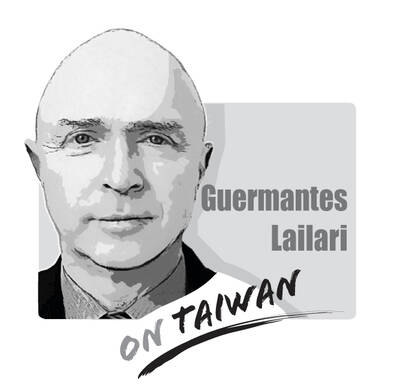The deal, signed on Sept. 9 and quietly tabled late last month, is to be ratified, behind closed doors, within just 21 sitting days and without any public hearings. Legislators on the trade committee were briefed for just one hour by government officials last week, with no independent witnesses present.
To any Taiwanese who has tracked the style of negotiations between President Ma Ying-jeou’s (馬英九) administration and China in the past four years, the situation described above will sound eerily familiar.
However, the deal in question is not the Economic Cooperation Framework Agreement (ECFA) signed in 2010 after six months of negotiations, or the investment protection agreement inked on Aug. 9. It is the Foreign Investment and Protection Agreement (FIPA) between China and Canada, which critics say requires public scrutiny and risks putting Canada at a disadvantage.
However, the Conservative government of Canadian Prime Minister Stephen Harper refuses to hold public hearings and seems intent on forging ahead with an agreement that even its supporters admit contains flaws.
Among the most alarming aspects of the deal are its 31-year lifespan, in contrast with the six months’ warning necessary for Ottawa to pull out of the North American Free Trade Agreement (NAFTA), and the failure by Canadian negotiators to ensure that investors receive “national treatment” in China, which means that, at best, Canadian investors in China can expect treatment similar to that enjoyed by domestic Chinese firms. Moreover, Canada would be barred from imposing conditions favoring Canadian workers or resources for projects within Canada and it would be forced to restrict domestic access to fossil fuels, uranium, forests, fish and all other exhaustible resources in equal measure to any restrictions placed on exports to China, as Green Party Leader Elizabeth May said in an Oct. 1 press release.
Needless to say, such clauses are cause for concern when one deals with a resource-hungry rising power like China, whose state-owned firms are in the process of acquiring a large segment of Canada’s oil companies and fields, such as the proposed US$15 billion Nexen deal.
Then there is the clause that allows Chinese state-owned enterprises to sue the Canadian government for laws, regulations and court decisions that could “interfere with or prevent present or future profits.” While NAFTA contains similar provisions, FIPA goes further, as litigation could be done in secret with special tribunals, in which only the federal government can participate, leaving local governments and firms out in the cold.
The problem with all this is that investment between Canada and China is likely to be mostly one-way, with Chinese investment vastly outgunning that from Canada. This means that the risks are mostly Canada’s.
The Taiwanese government should pay close attention to what transpires between Canada and China in the coming months and years, as Beijing’s behavior and that of Chinese companies could provide important clues as to how they might behave in Taiwan. There are many instances of overlap, in which “unjust” clauses tend to favor China, and those could gain in importance as Taipei further opens up the country to Chinese investment.
It has often been said that Taiwan’s engagement with China can serve as a model for the international community and as a means to “predict” Beijing’s behavior. It is now apparent that Taiwan is not the only country that is facing skewed agreements. It may not have Canada’s natural resources, but intellectual property rights and company secrets in key high-tech sectors are just as likely to be targeted by Chinese investors. Most assuredly, Taiwan can learn a few things from Canada’s FIPA experience with China.
Chinese actor Alan Yu (于朦朧) died after allegedly falling from a building in Beijing on Sept. 11. The actor’s mysterious death was tightly censored on Chinese social media, with discussions and doubts about the incident quickly erased. Even Hong Kong artist Daniel Chan’s (陳曉東) post questioning the truth about the case was automatically deleted, sparking concern among overseas Chinese-speaking communities about the dark culture and severe censorship in China’s entertainment industry. Yu had been under house arrest for days, and forced to drink with the rich and powerful before he died, reports said. He lost his life in this vicious
A recent trio of opinion articles in this newspaper reflects the growing anxiety surrounding Washington’s reported request for Taiwan to shift up to 50 percent of its semiconductor production abroad — a process likely to take 10 years, even under the most serious and coordinated effort. Simon H. Tang (湯先鈍) issued a sharp warning (“US trade threatens silicon shield,” Oct. 4, page 8), calling the move a threat to Taiwan’s “silicon shield,” which he argues deters aggression by making Taiwan indispensable. On the same day, Hsiao Hsi-huei (蕭錫惠) (“Responding to US semiconductor policy shift,” Oct. 4, page 8) focused on
In South Korea, the medical cosmetic industry is fiercely competitive and prices are low, attracting beauty enthusiasts from Taiwan. However, basic medical risks are often overlooked. While sharing a meal with friends recently, I heard one mention that his daughter would be going to South Korea for a cosmetic skincare procedure. I felt a twinge of unease at the time, but seeing as it was just a casual conversation among friends, I simply reminded him to prioritize safety. I never thought that, not long after, I would actually encounter a patient in my clinic with a similar situation. She had

George Santayana wrote: “Those who cannot remember the past are condemned to repeat it.” This article will help readers avoid repeating mistakes by examining four examples from the civil war between the Chinese Communist Party (CCP) forces and the Republic of China (ROC) forces that involved two city sieges and two island invasions. The city sieges compared are Changchun (May to October 1948) and Beiping (November 1948 to January 1949, renamed Beijing after its capture), and attempts to invade Kinmen (October 1949) and Hainan (April 1950). Comparing and contrasting these examples, we can learn how Taiwan may prevent a war with